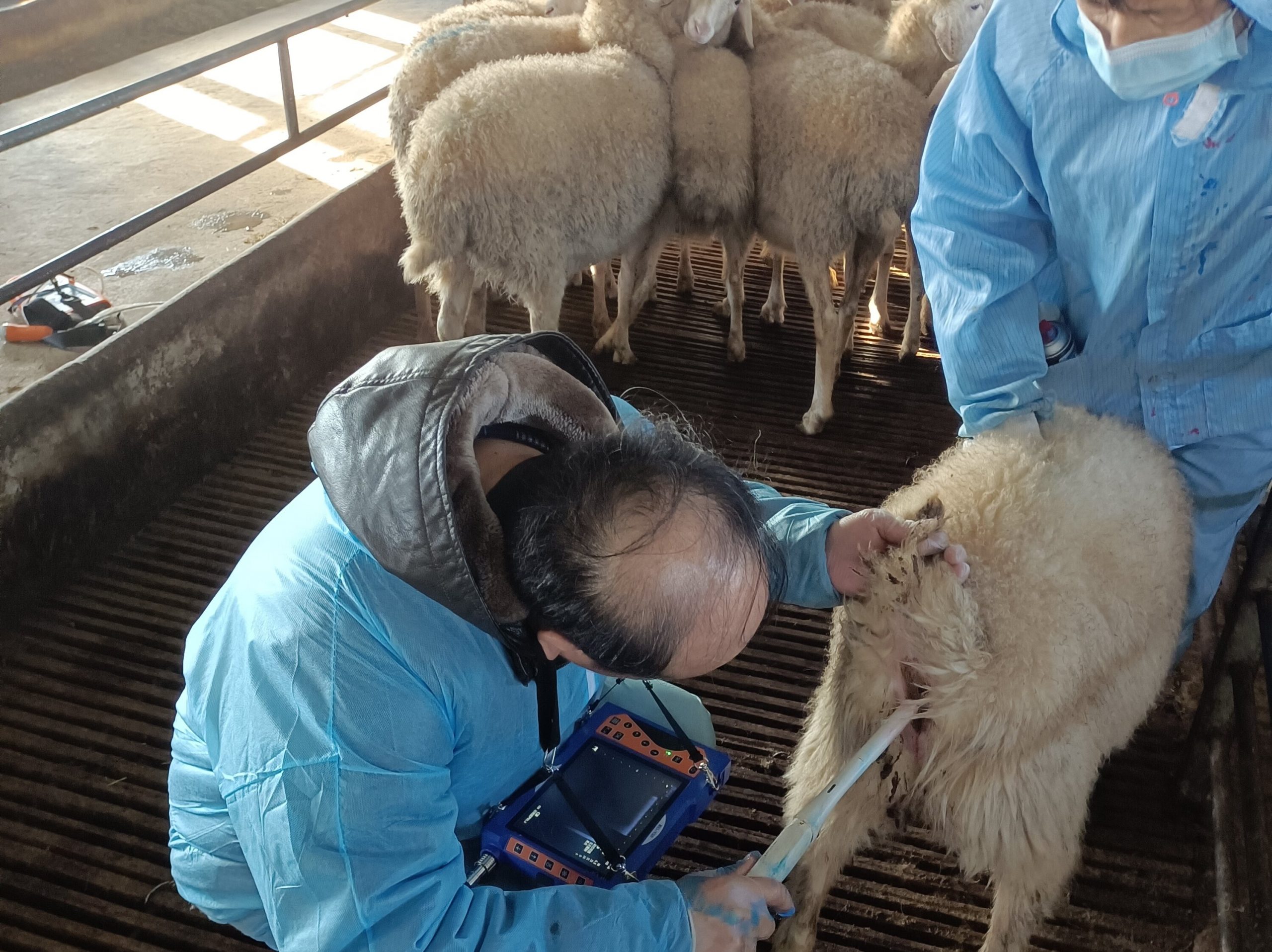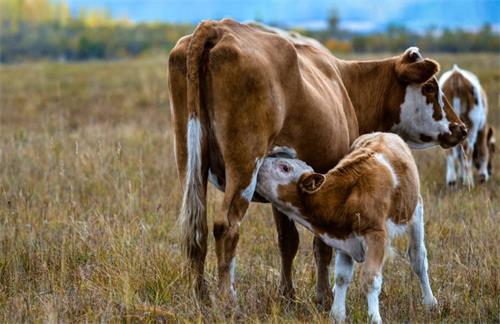For sheep breeders and veterinary professionals alike, the successful delivery of lambs—especially from primipara ewes (first-time mothers)—requires careful observation, timely interventions, and a clear understanding of physiological changes. In recent years, ultrasonography has emerged as a transformative tool in this domain. Known for its non-invasive nature, real-time imaging, and diagnostic accuracy, veterinary ultrasound—particularly B-mode ultrasound—now plays a critical role in ensuring safe and efficient artificial delivery procedures in sheep farming.

In this article, we explore how sheep ultrasound enhances the artificial delivery process for first-time ewes, supports early lamb development, and contributes to precision management in modern livestock systems. By integrating insights from international veterinary practice, the article highlights ultrasound’s significance not just as a diagnostic tool, but as a guide throughout the critical stages of lambing and early growth.
The Challenge of Artificial Delivery in Primipara Ewes
Unlike multiparous ewes (those that have delivered before), primipara ewes often face higher risks during parturition due to narrower pelvic canals, less developed maternal instincts, and inexperience in birthing behavior. These challenges increase the likelihood of dystocia (difficult labor), retained placenta, or failure to identify and care for the newborn lamb properly.
To manage these risks, artificial delivery—performed under veterinary supervision—is often necessary. In such cases, ultrasonography plays a dual role: monitoring the ewe’s birthing readiness and guiding real-time decisions during delivery.
Ultrasound allows veterinarians and shepherds to assess:
Fetal position and movement
Amniotic fluid volume
Uterine contractions and cervical dilation
Placental condition
By providing detailed images of the intrauterine environment, ultrasound enables accurate timing of artificial interventions and helps prevent complications that might arise from premature or delayed assistance.
Pre-Delivery Monitoring with Sheep Ultrasound
Veterinary ultrasound is typically used during the final 10 to 15 days of gestation to assess fetal maturity and the ewe’s readiness for delivery. In experienced hands, ultrasound can identify signs of approaching labor such as:
A drop in amniotic fluid levels
Reduced fetal activity
Cervical changes
Onset of mild uterine contractions
This information is especially important in managing artificial delivery for primipara ewes, where decisions need to be timely and precise. In countries such as Australia, New Zealand, and the UK, where commercial sheep farming is highly structured, veterinarians routinely use B-mode ultrasound to plan interventions and improve birthing outcomes in large flocks.
Ultrasound-Guided Artificial Delivery: A Practical Perspective
When ultrasound confirms labor has begun or dystocia is imminent, the artificial delivery process may involve:
Manual assistance during labor, often based on ultrasound-guided positioning of the fetus.
Timely extraction of the lamb to avoid prolonged hypoxia (oxygen deprivation).
Monitoring of fetal heartbeat and umbilical cord position during delivery.
Once the lamb is delivered, shepherds typically cut the umbilical cord manually and wipe some ewe urine on the lamb’s body. This common practice encourages the ewe to recognize the lamb as her own, stimulating maternal bonding through olfactory cues.

Postnatal Lamb Management and the Role of Ultrasound
The role of sheep ultrasound doesn’t end after birth. In fact, ultrasound is central to monitoring lamb health and growth, especially in structured systems where lamb survival and uniform development are economic priorities.
The Three Postnatal Phases of Lamb Feeding and Management
1. Early Lactation Period (0–25 Days)
This phase emphasizes adequate colostrum intake and milk production:
Lambs must ingest colostrum within 1 hour of birth to build immunity.
Ewes are given juicy feed (carrots, pumpkins, leafy greens) alongside increased concentrate to boost milk yield.
Ultrasound checks are conducted to monitor abdominal development and ensure proper digestion and organ growth.
Internationally, particularly in North America and parts of Europe, livestock operators have adopted this monitoring model to reduce mortality rates in early-stage lambs.
2. Mid-Lactation Period (25 Days to Group Grazing)
This is the training phase:
Lambs are introduced to solid feeds around day 10.
Supplementary feeding areas are built with fencing that allows lambs to enter but keeps ewes out.
Feed may include chopped carrots, hay bundles, or fried grain mash, all designed to encourage early rumination.
B-mode ultrasound is used here to measure growth rate, digestive tract development, and fat deposition. This allows for timely interventions if a lamb is underperforming or showing signs of illness.
3. Late Lactation Period (Group Grazing to Weaning ~4 Months)
During this period, lambs graze away from their mothers during the day and reunite at night. Ultrasound is used periodically to:
Detect early weaning readiness
Monitor muscle mass development
Assess nutritional efficiency through organ imaging
Regular ultrasound checks during this time help ensure that lambs grow uniformly and that their weaning transition is smooth, minimizing stress and nutritional shock.
Why Use Ultrasound in Sheep Farming?
Key Benefits
Non-invasive and safe
Ultrasound does not harm the ewe or the lamb and can be used repeatedly without risk.Real-time diagnosis
B-mode ultrasound offers dynamic images that change as the probe moves, allowing for immediate adjustments during delivery or health assessments.Objective measurements
It provides quantifiable data—such as fetal heart rate, muscle mass, and internal organ dimensions—which help in decision-making.Enhanced survival rates
Monitoring fetal stress and ensuring early colostrum intake through guided management improves survival, especially for first-time lambs.Supports animal welfare and productivity
Healthy lambs mean healthier flocks. Ultrasound allows for targeted feeding, selective culling, and early treatment, enhancing both animal well-being and farm profitability.
International Perspectives on Sheep Ultrasound
From New Zealand hill farms to Scottish lowlands, and from Iowa’s precision sheep dairies to large-scale Australian wool operations, ultrasound has become a cornerstone of reproductive and early lamb management. The emphasis is on data-driven flock management, a global trend that relies on technologies like the B-mode ultrasound to enhance productivity while maintaining welfare standards.
In commercial settings, veterinary professionals often use portable and waterproof ultrasound devices, capable of working in field conditions. Machines like the BXL-V50—designed for large and small ruminants—are especially useful in such operations due to their high-resolution imaging and durable design, enabling lamb evaluation right in the barn or paddock.
Challenges and Future Outlook
While the benefits of sheep ultrasound are numerous, some challenges persist:
Training: Effective use of ultrasound requires skill, which may not always be available on small farms.
Cost: Initial equipment costs can be high, though the investment pays off over time.
Rural accessibility: In some remote areas, access to veterinary ultrasound may still be limited.
However, as ultrasound technology becomes more affordable and portable, and as digital veterinary training spreads globally, these barriers are expected to diminish. Future integrations with AI and machine learning may allow automated measurements of fetal health and lamb growth, reducing the need for manual interpretation.
Conclusion
Ultrasound technology has redefined the way sheep farmers and veterinarians approach artificial delivery and early lamb management. For primipara ewes, who face higher birthing risks, ultrasound ensures safer interventions and better postnatal outcomes. Through regular monitoring of lamb health, digestion, and development, ultrasound supports precision feeding, improves survival rates, and contributes to the overall success of the flock.
As more farmers worldwide recognize the long-term value of sheep ultrasound, it is becoming a vital component of responsible, efficient, and profitable sheep production.
Reference Sources:
Whitaker, D. A., & Smith, E. (2021). Veterinary Ultrasonography in Food-Producing Animals. Journal of Veterinary Imaging.
MLA Australia. (2023). Ultrasound use in sheep reproduction management. https://www.mla.com.au/extension-training-and-tools/ultrasound-use-in-sheep
Sheep Vet Society UK. (2022). The Role of Ultrasonography in Modern Sheep Flocks. https://www.sheepvetsoc.org.uk/resources
Iowa State University Extension. (2023). Precision Lambing with Ultrasound: A Producer’s Guide. https://www.extension.iastate.edu/livestock/ultrasound-lambing-guide








